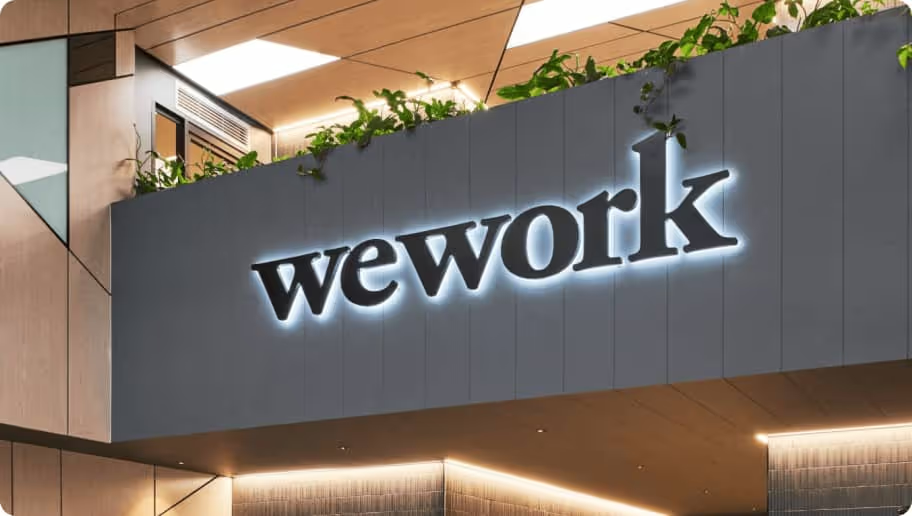How PackageX helped Saltbox scale from 200,000 to 450,000 deliveries without adding headcount

WeWork is a global provider of flexible shared workspaces and services for enterprises with over 350 locations worldwide and 500,000 tenants.
About
WeWork is an American commercial real estate company that provides flexible shared workspaces for technology startups and services for other enterprises.
WeWork primarily generates revenue through the rental of office space. The Company's business model is to rent office space at a cheap rate, via long-term lease contracts, which it then re-rents to small businesses, start-ups, and individuals at higher rates under a flexible renting model.

Problem
As WeWork was expanding its network of physical and virtual coworking offices around the world, it needed a package management system (PMS) that could, without error, handle the increasing volumes of clientele mail and packages at every one of its offices.
In order to effectively manage packages, WeWork realized they required a PMS that could track chain of custody. At the onset of its global expansion, tracking packages was an afterthought. Only after opening 800 offices worldwide did the company realize enormous quantities of mail and packages were getting lost, which led to costly package reimbursements. It was clear the company needed a more effective way to track packages and notify clientele.
The first solution WeWork implemented was a barcode-based solution, and it worked for a little while until further expansion started to peel back the curtain on the solution’s limitations.

Despite not having appropriately sized mailrooms and package overflow, WeWork’s barcode-based system was inherently flawed. It served its purpose but could not address the wider issues of package delivery.
That being, when packages were delivered, they would first pass through multiple courier services. Multiple couriers meant multiple barcodes. Mailroom operators would then scan in both barcodes, recording one package as two different packages in its system. This resulted in excess pick-up notifications going to clientele who had already picked up mailroom packages. Issues like these amplified clientele frustration when packages went missing and WeWork couldn’t reliably track if packages were in the mailroom or had been delivered.
Because it had an inaccurate and unreliable system, WeWork knew it needed to make a change; otherwise, the continued issues would negatively affect the professionalism of its mailrooms and company reputation.
Solution
WeWork piloted several different kinds of package management software; however, it chose PackageX over alternatives due to its major differentiation factor: its optical character recognition (OCR).
PackageX’s OCR is so powerful because its parent company, VisionX, specializes in computer vision technology. All other solutions are package management companies first, with an added OCR element. To WeWork, the competitive advantage was obvious: PackageX’s artificial intelligence and machine learning algorithms were far more advanced and reliable.
Since PackageX’s OCR requires no additional hardware - just one’s phone, WeWork decreased its capital expenditure on barcode scanners. It also eliminated liability because the new OCR technology automatically understood label information, notified recipients, and stored data on the backend, from simply taking a picture of a label.
Lastly, the OCR technology's 57 supported languages helped WeWork expand its package operations globally by giving it the ability to standardize all of its mail and package operations worldwide, meaning customers and operators have the same experience, no matter what country they’re based in.
Feedback
Due to WeWork’s rigorous piloting and testing methods, it was able to prove just how valuable PackageX was to its operations. Through measuring the time, it took to do each part of the mail and package process with timers and conducting data analysis, the company found PackageX saved its operations an average of one hour per day, per location, per employee.
This allowed WeWork to do three things:
- With the time saved, employees could take on additional hospitality and customer focused responsibilities, boosting the level of its service.
- For larger mailrooms, it reduced the number of employees needed, at all times, for it to operate - saving on salary costs. When there was only one mailroom attendant, the company decreased operational expenses by reducing mailroom hours, as the same amount of work could be done in less time.
- On top of these benefits, WeWork was able to use PackageX to wow their clientele with mailroom services to the point where they began branding it as a luxury perk for their members.

Package receiving success stories
Discover how leading brands across industries and the globe use our inbound package receiving software to unlock the full potential of their receiving operations.



